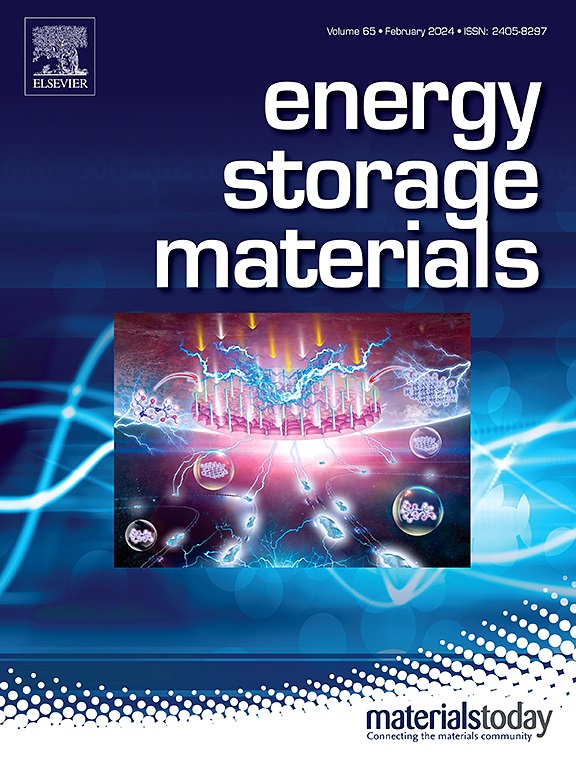High-Performance Ru Metallene Cathode via 2D MXenes Interface Tailoring in Li-CO2 Batteries
IF 18.9
1区 材料科学
Q1 CHEMISTRY, PHYSICAL
引用次数: 0
Abstract
Li-CO2 batteries were known for exceptional theoretical energy density of 1876 W h/kg, which were an integrated system for energy storage and CO2 fixation. The cathode catalysts played a crucial role in addressing the slow reaction kinetics during the charge and discharge processes in Li-CO2 batteries. The Ru-based catalyst had attracted considerable research attention, but its large-scale application was hindered by its catalytic performance dependence on support properties and high cost. This study introduced a series of composite structure that Ru(001) atomic layer loaded on hexagonal MXenes substrate, finely tuned the electronic structure of surface Ru atoms by strain and ligand effects. Ru/M2X displayed a wide range of tunable d band center from -1.39 eV to -1.04 eV. Among 11 MXene supports, Ru atom layer located on V2C exhibited reduced rate-determining step of 1.03 eV and remarkably low total overpotential of 0.79 V, making it an excellent bifunctional catalyst. Furthermore, φ = (the ratio of band center for to electronegativity χ) serves as a descriptor that demonstrates a strong linear relationship with total overpotential. These findings offered a design strategy and selection criteria for the structural design of Ru-based materials.求助全文
约1分钟内获得全文
求助全文
来源期刊

Energy Storage Materials
Materials Science-General Materials Science
CiteScore
33.00
自引率
5.90%
发文量
652
审稿时长
27 days
期刊介绍:
Energy Storage Materials is a global interdisciplinary journal dedicated to sharing scientific and technological advancements in materials and devices for advanced energy storage and related energy conversion, such as in metal-O2 batteries. The journal features comprehensive research articles, including full papers and short communications, as well as authoritative feature articles and reviews by leading experts in the field.
Energy Storage Materials covers a wide range of topics, including the synthesis, fabrication, structure, properties, performance, and technological applications of energy storage materials. Additionally, the journal explores strategies, policies, and developments in the field of energy storage materials and devices for sustainable energy.
Published papers are selected based on their scientific and technological significance, their ability to provide valuable new knowledge, and their relevance to the international research community.
 求助内容:
求助内容: 应助结果提醒方式:
应助结果提醒方式:


